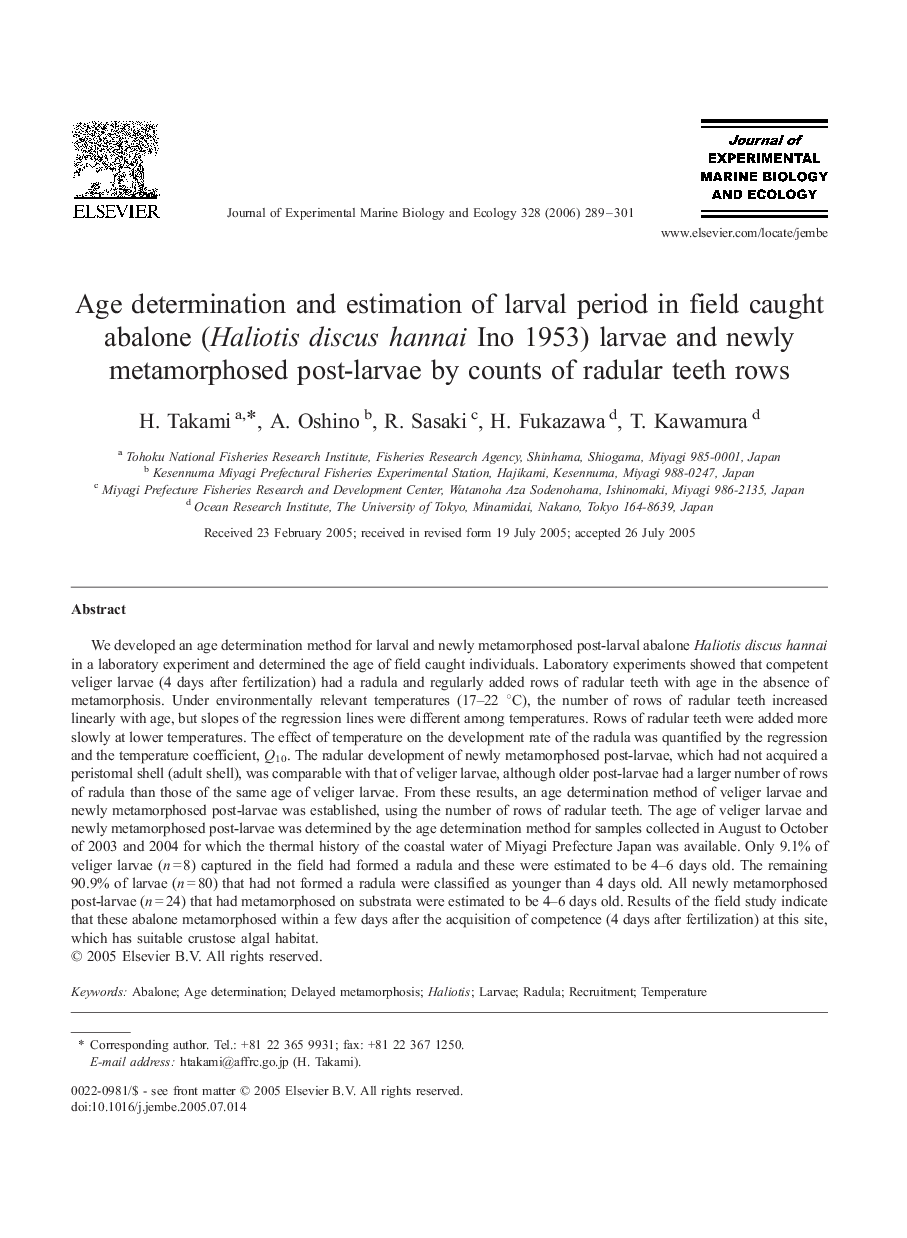| Article ID | Journal | Published Year | Pages | File Type |
|---|---|---|---|---|
| 4398284 | Journal of Experimental Marine Biology and Ecology | 2006 | 13 Pages |
We developed an age determination method for larval and newly metamorphosed post-larval abalone Haliotis discus hannai in a laboratory experiment and determined the age of field caught individuals. Laboratory experiments showed that competent veliger larvae (4 days after fertilization) had a radula and regularly added rows of radular teeth with age in the absence of metamorphosis. Under environmentally relevant temperatures (17–22 °C), the number of rows of radular teeth increased linearly with age, but slopes of the regression lines were different among temperatures. Rows of radular teeth were added more slowly at lower temperatures. The effect of temperature on the development rate of the radula was quantified by the regression and the temperature coefficient, Q10. The radular development of newly metamorphosed post-larvae, which had not acquired a peristomal shell (adult shell), was comparable with that of veliger larvae, although older post-larvae had a larger number of rows of radula than those of the same age of veliger larvae. From these results, an age determination method of veliger larvae and newly metamorphosed post-larvae was established, using the number of rows of radular teeth. The age of veliger larvae and newly metamorphosed post-larvae was determined by the age determination method for samples collected in August to October of 2003 and 2004 for which the thermal history of the coastal water of Miyagi Prefecture Japan was available. Only 9.1% of veliger larvae (n = 8) captured in the field had formed a radula and these were estimated to be 4–6 days old. The remaining 90.9% of larvae (n = 80) that had not formed a radula were classified as younger than 4 days old. All newly metamorphosed post-larvae (n = 24) that had metamorphosed on substrata were estimated to be 4–6 days old. Results of the field study indicate that these abalone metamorphosed within a few days after the acquisition of competence (4 days after fertilization) at this site, which has suitable crustose algal habitat.
